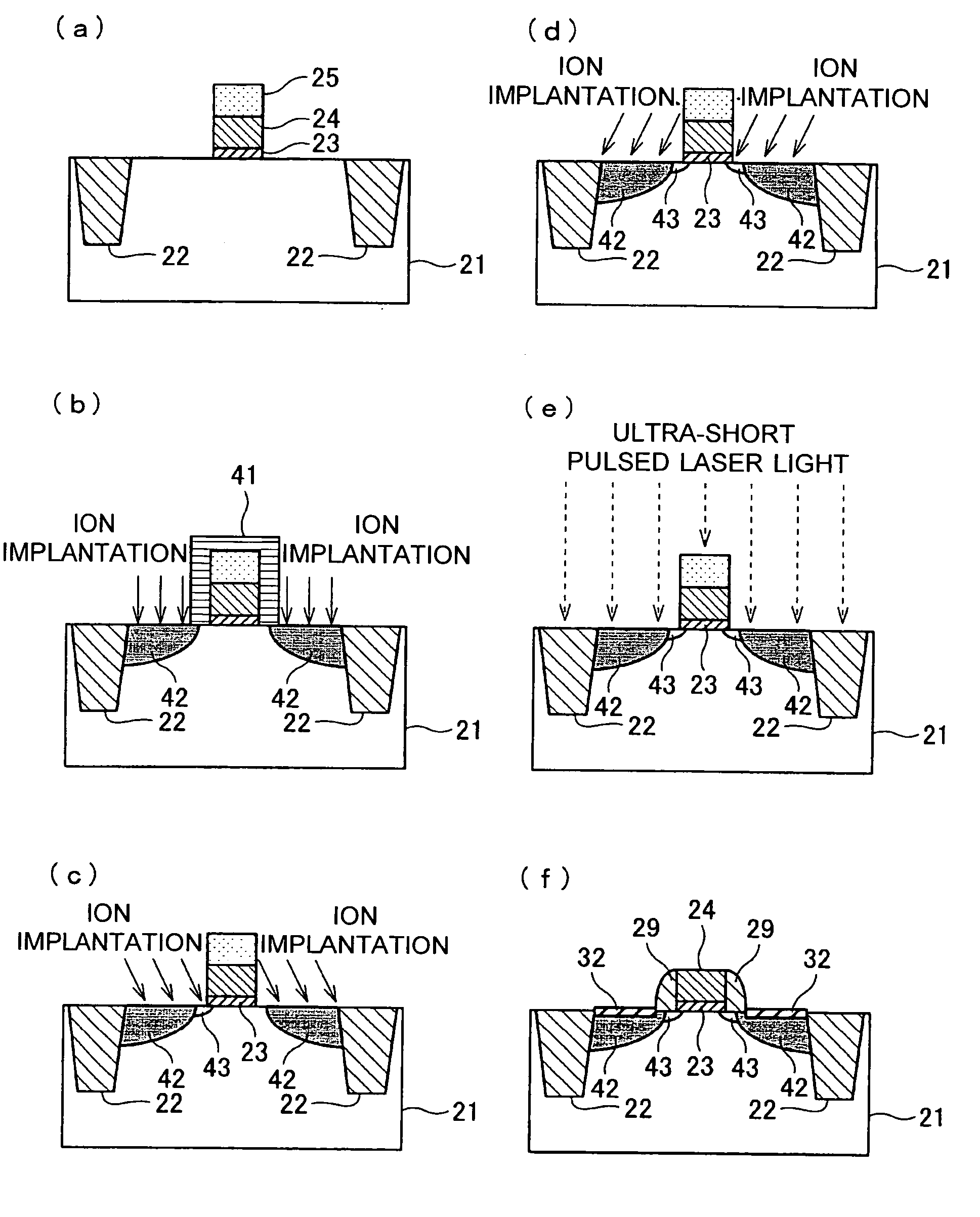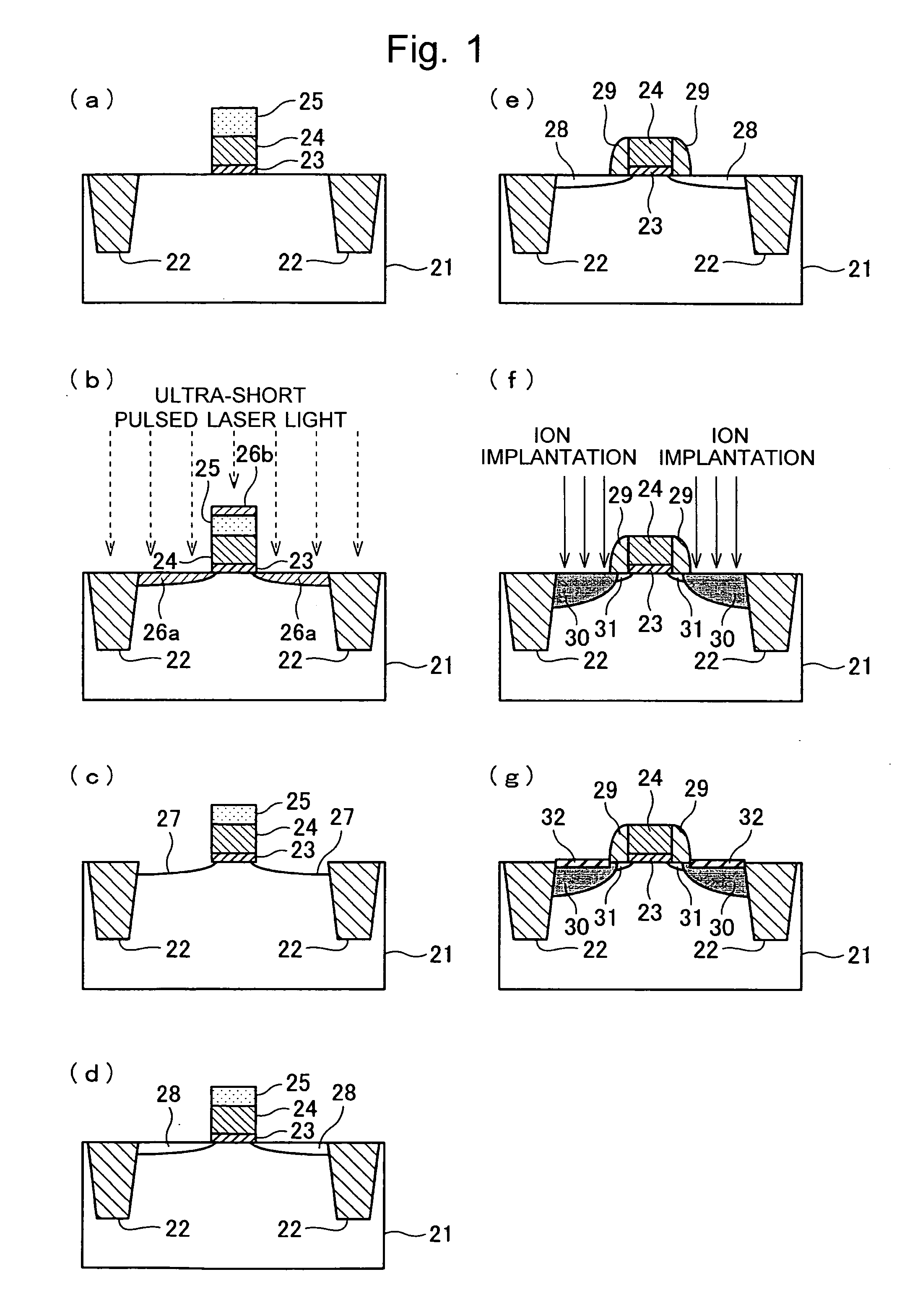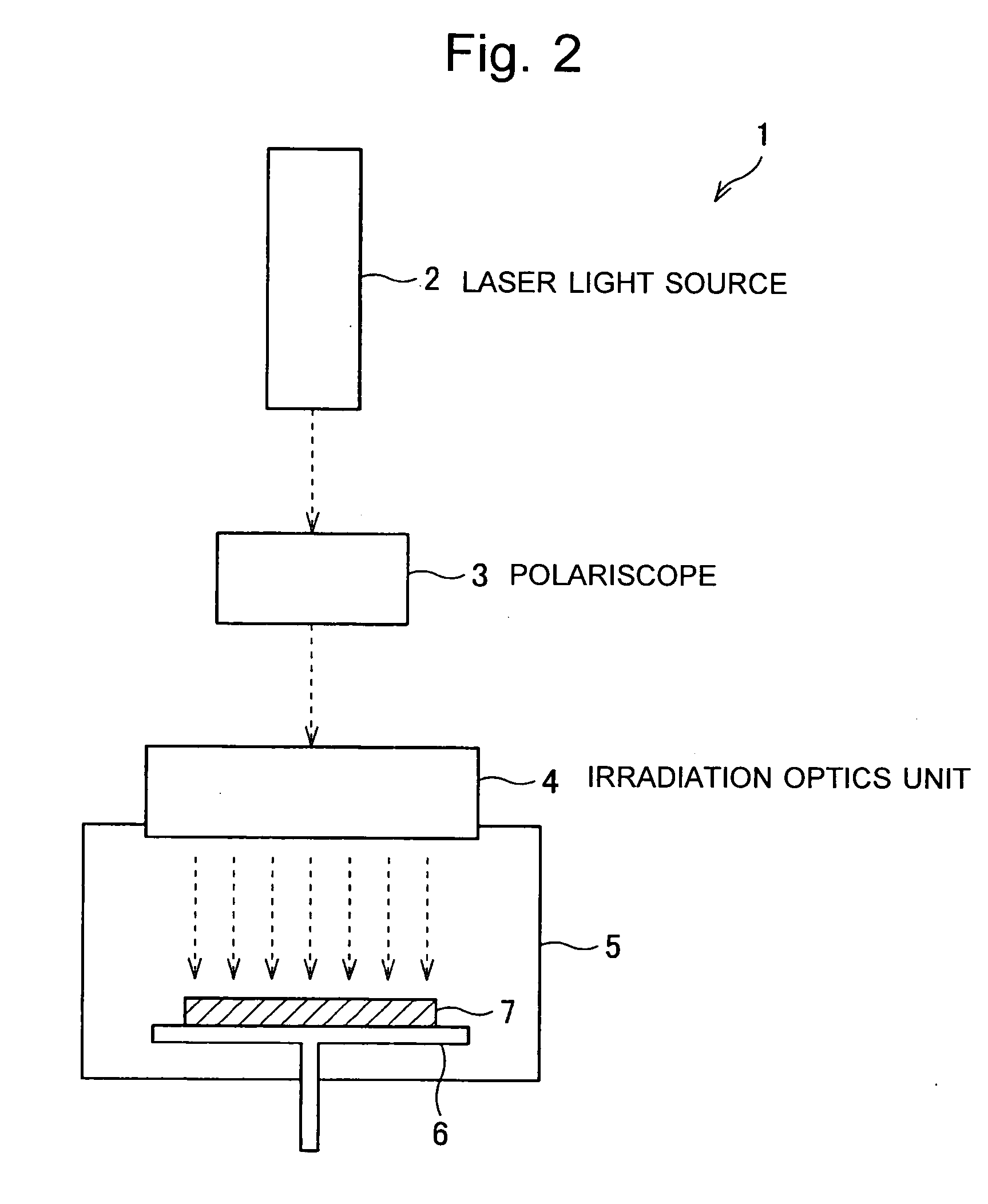Surface Modification Method for Solid Sample, Impurity Activation Method, and Method for Manufacturing Semiconductor Device
- Summary
- Abstract
- Description
- Claims
- Application Information
AI Technical Summary
Benefits of technology
Problems solved by technology
Method used
Image
Examples
embodiment 1
[0124] This section describes an embodiment of the present invention on the basis of FIGS. 2 to 6.
[0125]FIG. 2 is a schematic diagram showing an ultra-short pulsed laser irradiation system 1 of the present embodiment. As shown in FIG. 2, the irradiation system 1 includes a laser light source 2, a polariscope 3, an irradiation optics unit 4 and a chamber 5.
[0126] The laser light source 2 generates an ultra-short pulsed laser light having a pulse width within a range from 10 to 1000 femtoseconds, which corresponds to a frequency band from 1 to 100 THz. An example is a titanium-sapphire laser. The laser light source 2 can control the pulse width, the laser fluence, the number of pulse shots and the wavelength of the laser light to be produced. The laser fluence hereby means the density of radiation energy. The laser fluence is controlled through the output energy and the spot diameter of the laser light generated by the laser light source 2.
[0127] The polariscope 3, which consists o...
example 1-1
[0130] In this example, the surface of a solid sample was modified using the above-described ultra-short pulsed laser irradiation system 1. In Example 1, a titanium-sapphire laser was used as the laser light source 2. The laser light was 800 nm in wavelength, 100 femtoseconds in pulse width and 250 mJ / cm2 in laser fluence, and ten shots of the laser pulses were generated at a pulse repetition frequency of 1 kHz. A single-crystal silicon substrate was used as the solid sample 7.
[0131]FIGS. 3 and 4 are lattice images of the surface portion of a single-crystal silicon substrate irradiated with an ultra-short pulsed laser light under the above conditions; the images were taken with a high-resolution transmission electron microscope (TEM) FIG. 4 is an enlarged image of FIG. 3.
[0132]FIGS. 3 and 4 show that the lattice is disordered in the superficial nanometer-region (whose thickness is about 24 nm in the present embodiment) of the single-crystal silicon substrate. This means that the r...
example 1-2
[0135] As opposed to Example 1-1, the present example is an example in which an amorphous phase was modified to a crystalline phase. As in the previous example, a titanium-sapphire laser was used as the laser light source 2. A single-crystal silicon substrate, on which an amorphous layer of about 10 nm in thickness was formed by implanting germanium ions by 5 keV, was used as the solid sample 7.
[0136]FIG. 6 shows the lattice images of the surface region of the single-crystal silicon substrate with the amorphous layer formed on it. The images were taken with a TEM before and after the irradiation of the ultra-short pulse laser light, respectively. FIG. 6(b) is an enlarged image of FIG. (a).
[0137] As shown in FIG. 6, it was confirmed that the amorphous layer formed from the surface to a depth of 10 nm was changed to a crystalline phase by an irradiation of an ultra-short pulsed laser light. This proves that an amorphous phase can be changed to a crystalline phase by an irradiation o...
PUM
 Login to View More
Login to View More Abstract
Description
Claims
Application Information
 Login to View More
Login to View More - R&D
- Intellectual Property
- Life Sciences
- Materials
- Tech Scout
- Unparalleled Data Quality
- Higher Quality Content
- 60% Fewer Hallucinations
Browse by: Latest US Patents, China's latest patents, Technical Efficacy Thesaurus, Application Domain, Technology Topic, Popular Technical Reports.
© 2025 PatSnap. All rights reserved.Legal|Privacy policy|Modern Slavery Act Transparency Statement|Sitemap|About US| Contact US: help@patsnap.com



